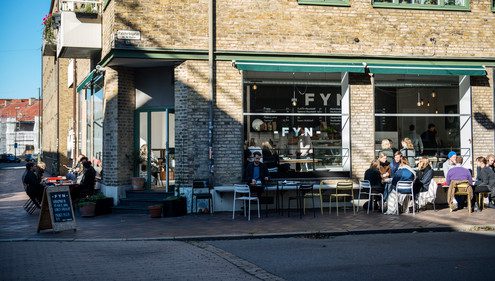Most of the students within the Master’s Program in Urban Studies at Malmö University seem to be young (between their 20s and 30s) and it might be accurate to assume that most of them are what Prensky (2001) would call “digital natives”—people that grew up using digital technology and are thus naturally competent using it. However, White (2014a) reminds us that being proficient in navigating the internet or using social media does not mean that a student actually knows how to effectively use digital technologies for the purpose of studying, evaluating the accuracy and legitimacy of a source, or formulating coherent arguments. This skill is part of a set of practices called digital literacies or “those capabilities which fit an individual for living, learning and working in a digital society” (Jisc, 2018). Digital literacies include a number of capabilities such as media literacy (i.e., the skill to critically read and write academic and professional outputs); information literacy (i.e., the ability to not only find information but also interpreting, evaluating, managing and sharing it); and learning skills (i.e., the capacity to “study and learn effectively in technology-rich environments” in both formal and informal settings) (ibid). These facts and interventions made me realize that we, as educators, hardly spend any time discussing or teaching digital literacy to our students. Of course, we discuss issues such as the credibility, accuracy, authority and legitimacy of online sources vis-à-vis traditional “legitimate” sources such as books and peer-reviewed articles. An approach like this, however, ignores the reality of how students actually learn and where they look for information. In other words, argues White (2014b), there is a tension between the requirements posed by formal academia and the day-to-day learning practices of students which in turns creates a “black market” of knowledge. Let me expand using one of White’s (2014b) examples: students know that Wikipedia is not considered a reliable source of information (i.e., does not meet academic standards). Yet, students use it anyway as a learning practice but simply learn to not openly discuss or cite it in the classroom. What needs to happen is that we acknowledge the current learning practices of our students and instead of discouraging certain sources, we promote a critical learning practice around the use of online sources. In other words, in a digital era, students should not be forced to negotiate between how they learn and what formal academia expects of them. To tackle the issue (i.e., preventing a black market of knowledge), capabilities such as digital literacies need to be part of the curriculum in urban studies. I envision that such an approach could be introduced at the beginning of the program, developed during methods courses (e.g., Catching Urbanity and Making Urban Studies), and, finally, integrated during the time the students write their theses.
References
- Jisc (2018) Developing digital literacies. Available at: https://www.jisc.ac.uk/guides/developing-digital-literacies (accessed 6 April 2021).
- Prensky M (2001) Digital Natives, Digital Immigrants Part 2: Do They Really Think Differently? On the Horizon 9(6): 1–6. Available at: https://www-emerald-com.libezproxy.open.ac.uk/insight/content/doi/10.1108/10748120110424843/full/pdf?title=digital-natives-digital-immigrants-part-2-do-they-really-think-differently.
- White DS (2014a) Part 1. Visitors and Residents. Available at: https://youtu.be/sPOG3iThmRI (accessed 6 April 2021).
- White DS (2014b) Part 2. Visitors and Residents: Credibility. Available at: https://youtu.be/kO569eknM6U (accessed 6 April 2021).
